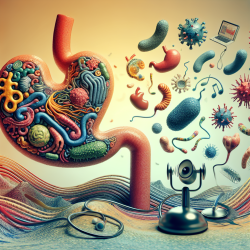Childhood trauma is a profound experience that can cast long shadows over an individual's life. Recent research has illuminated the pathways from childhood trauma to suicidal ideation, highlighting the critical roles of emotion regulation and depressive symptoms. As practitioners, understanding these pathways can significantly enhance our ability to support those affected by trauma.
The Impact of Childhood Trauma
Childhood trauma, encompassing experiences such as emotional neglect and physical or sexual abuse, is a significant risk factor for developing suicidal ideation. The research by Laghaei et al. (2023) underscores the intricate connections between early traumatic experiences and later mental health challenges, such as depression and difficulties in emotion regulation.
The Mediating Role of Emotion Regulation
Emotion regulation difficulties are a key mediator between childhood trauma and suicidal ideation. The study found that individuals with a history of childhood trauma often struggle with regulating their emotions, leading to increased vulnerability to depressive symptoms. These findings suggest that interventions aimed at improving emotion regulation could be pivotal in reducing the risk of suicidal ideation.
Depressive Symptoms as a Conduit
Depressive symptoms also play a crucial role in this pathway. The research indicates that depression not only directly correlates with suicidal thoughts but also interacts with emotion regulation difficulties to exacerbate these risks. This highlights the importance of addressing depressive symptoms in therapeutic settings, particularly for those with a history of childhood trauma.
Implementing Research Findings in Practice
For practitioners, these insights offer valuable guidance on where to focus therapeutic efforts. Here are some strategies to consider:
- Emotion Regulation Interventions: Incorporate techniques such as mindfulness and cognitive-behavioral strategies to help clients develop better emotional control.
- Addressing Depressive Symptoms: Utilize evidence-based treatments like cognitive-behavioral therapy (CBT) to target depression effectively.
- Trauma-Informed Care: Ensure that all therapeutic practices are sensitive to the needs of individuals with a history of trauma, fostering a safe and supportive environment.
The Path Forward
The study's findings underscore the need for continued research into the complex interactions between childhood trauma, emotion regulation, and depression. By deepening our understanding of these relationships, we can develop more effective interventions that not only address immediate symptoms but also promote long-term resilience and well-being.
To read the original research paper, please follow this link: Pathways from childhood trauma to suicidal ideation: mediating through difficulties in emotion regulation and depressive symptoms.










